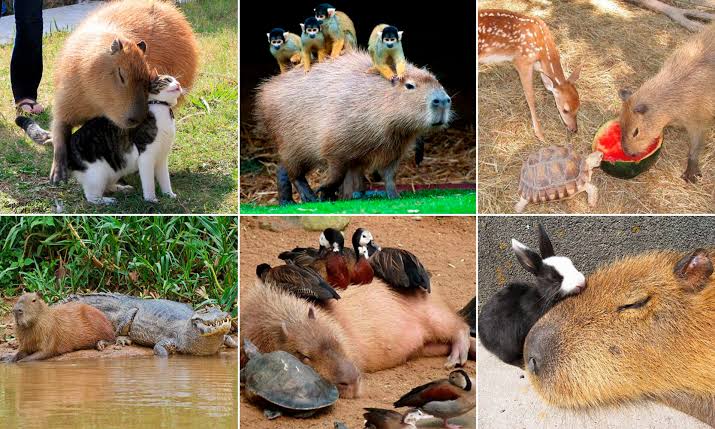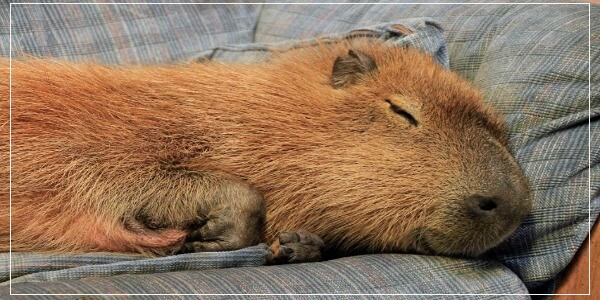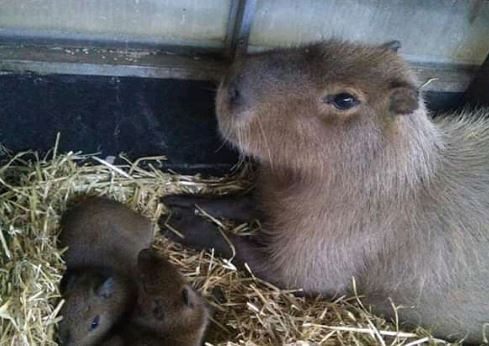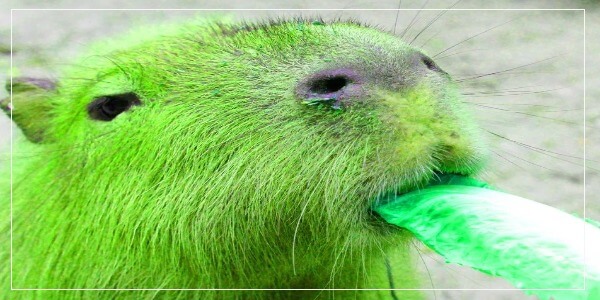Capybaras, the largest rodents in the world, are fascinating creatures known for their semi-aquatic lifestyle and social behavior. As the seasons change, one question often arises: Do capybaras hibernate in the winter?
This article will explore capybaras’ winter survival strategies, the factors influencing their behavior during this season, and essential information about their care in colder temperatures.
Do Capybaras Hibernate in the Winter?
Capybaras do not hibernate in the traditional sense. Unlike bears or other animals that undergo deep sleep during the winter, capybaras remain active throughout the year. However, they exhibit certain behavioral changes to adapt to colder conditions and ensure survival.
During the winter, capybaras become less active and reduce their movement to conserve energy. They rest more and may exhibit a slower pace than in other seasons. By conserving energy this way, capybaras can endure the challenges of colder months.
Factors Influencing Capybaras’ Winter Behavior
Several factors influence capybaras’ behavior during the winter season. These include temperature, food availability, and social dynamics.
1. Temperature
Capybaras are native to South America, where they inhabit tropical and subtropical regions. Therefore, they are not well-adapted to extremely cold temperatures. As the temperature drops, capybaras tend to slow down their activities and seek warmer areas for shelter.
2. Food Availability
During the winter, the availability of food sources for capybaras may decrease. In colder regions, vegetation becomes scarce or dies off, limiting their foraging options. Capybaras are herbivores and primarily feed on grasses and aquatic plants, so the lack of suitable food can impact their behavior and energy levels.
3. Social Dynamics
Capybaras are highly social animals and live in groups called “herds.” These groups provide warmth and protection, especially during the winter months. Capybaras huddle together to share body heat, reducing heat loss and ensuring the survival of the group as a whole.
What Changes Do Capybaras Undergo During the Winter Season?
As the winter season arrives, capybaras undergo certain physiological and behavioral changes to adapt to the colder conditions.
Physiologically, capybaras develop a thicker and denser coat during the winter. This enhanced insulation helps them retain body heat and protects against the cold. The coat change is accompanied by changes in the capybara’s skin, which produces more oils to keep their fur waterproof and insulated.
Behaviorally, capybaras become more sedentary during the winter. They spend significant time basking in the sun or resting to preserve energy. This reduction in activity helps them cope with the challenges of colder temperatures and limited food availability.
Are Capybaras More Active in the Winter or Do They Slow Down?
Capybaras generally slow down during the winter months. The combination of colder temperatures, reduced food availability, and the need to conserve energy decreases their overall activity levels. They move slower, rest more, and engage in less frequent social interactions.
However, it’s important to note that capybaras do not enter a state of hibernation. While they may slow down, they remain awake and alert, ready to respond to any potential environmental threats or changes.
Where Do Capybaras Find Shelter During the Winter?
To cope with the winter chill, capybaras seek shelter in various locations. These include:
- Burrows: Capybaras dig burrows near water bodies, such as rivers or ponds. These burrows protect from the cold and offer a safe retreat for the Capybara group.
- Dense Vegetation: Capybaras also find refuge in dense vegetation like thickets or forested areas. The vegetation acts as a natural barrier against wind and provides additional insulation.
- Riverbanks: Capybaras are excellent swimmers and often take advantage of their semi-aquatic nature during the winter. They frequently rest near riverbanks, using the water as a barrier against the cold and potential predators.
Can Capybaras Tolerate Cold Temperatures During the Winter?
While capybaras can somewhat tolerate colder temperatures, they are not well-suited for extreme cold. Their natural habitat comprises warm and tropical regions, making them more comfortable in milder climates. Capybaras can experience difficulties regulating their body temperature when exposed to freezing temperatures.
It’s essential to ensure capybaras have access to suitable shelters, such as caves or vegetation, during colder periods. This allows them to retreat and protect themselves from the elements.
What Should I Know About Capybara Care During the Winter Season?
If you live in an area with colder winters and plan to care for capybaras, there are several important considerations to keep in mind:
- Provide Adequate Shelter: Ensure capybaras access suitable shelter, such as insulated enclosures or heated barns. This will help them stay warm and protected from harsh weather conditions.
- Maintain a Balanced Diet: During the winter, capybaras’ natural food sources may be limited. Supplement their diet with high-quality hay, fresh vegetables, and other appropriate food items to meet their nutritional needs.
- Monitor Temperature and Humidity: Capybaras thrive between 22 to 29 degrees Celsius (72 to 84 degrees Fahrenheit) and a humidity level of around 50%. Use temperature-regulated enclosures or heaters to maintain optimal conditions.
- Provide enrichment activities to keep capybaras mentally stimulated during the winter. This can include puzzle feeders, toys, or opportunities for social interaction with other capybaras.
- Regular Veterinary Check-ups: Schedule regular check-ups with a qualified veterinarian specializing in exotic animals. They can guide capybara care, monitor their health, and address specific needs during winter.
Can Capybaras Survive in Regions With Extremely Cold Winters?
Capybaras are better suited for warm and tropical climates. While they can tolerate cooler temperatures, extreme cold can be challenging for them. Providing proper shelter and care is crucial to ensure their well-being in regions with freezing winters.
Do Capybaras Lose Weight During the Winter?
Capybaras may experience some weight loss during the winter due to reduced food availability and decreased activity levels. However, this weight loss can be minimized with appropriate care and nutrition.
How Do Capybaras Stay Warm in the Water During the Winter?
Capybaras have a thick layer of insulating fat under their skin, which helps them stay warm in the water. Additionally, they may huddle together in groups, sharing body heat to stay cozy while submerged.
Conclusion
Capybaras do not hibernate during the winter but instead exhibit adaptive behaviors to survive colder temperatures. They slow their activity levels, seek shelter in caves or dense vegetation, and rely on social dynamics for warmth and protection.
Providing adequate care for capybaras during the winter is important, ensuring they have suitable shelter, a balanced diet, and regular veterinary attention. By understanding their winter survival strategies, we can better appreciate these fascinating creatures and ensure their well-being throughout the year.

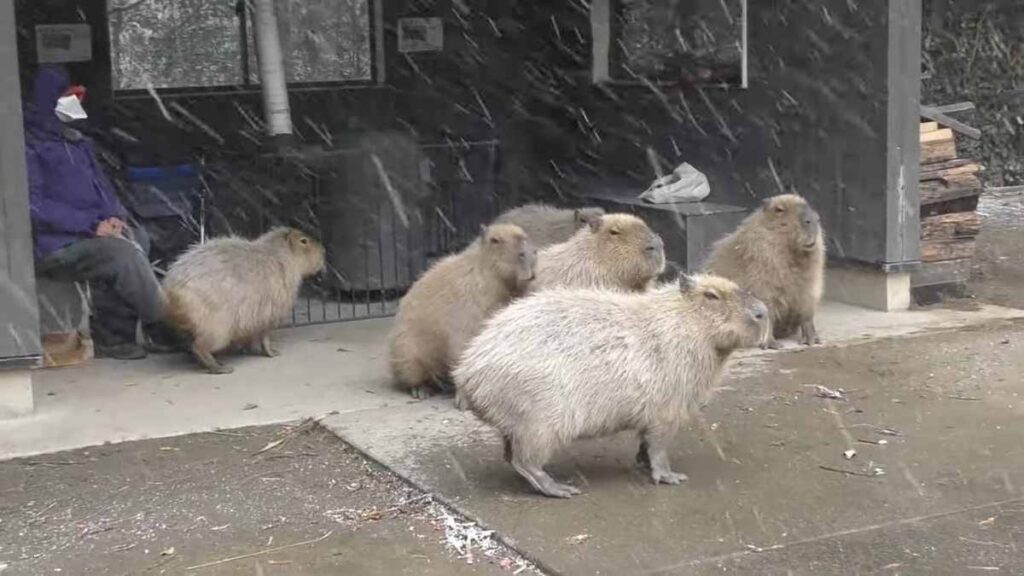
![How Long Do Capybaras Live? - [Answered] How Long Do Capybaras Live](https://capybaratips.com/wp-content/uploads/2023/03/Capybara-Pix-250x200.webp)
![Why Do Capybaras Not Have Tails? - [Answered] Why Do Capybaras Not Have Tails](https://capybaratips.com/wp-content/uploads/2023/03/Capy-Tail-250x200.webp)

